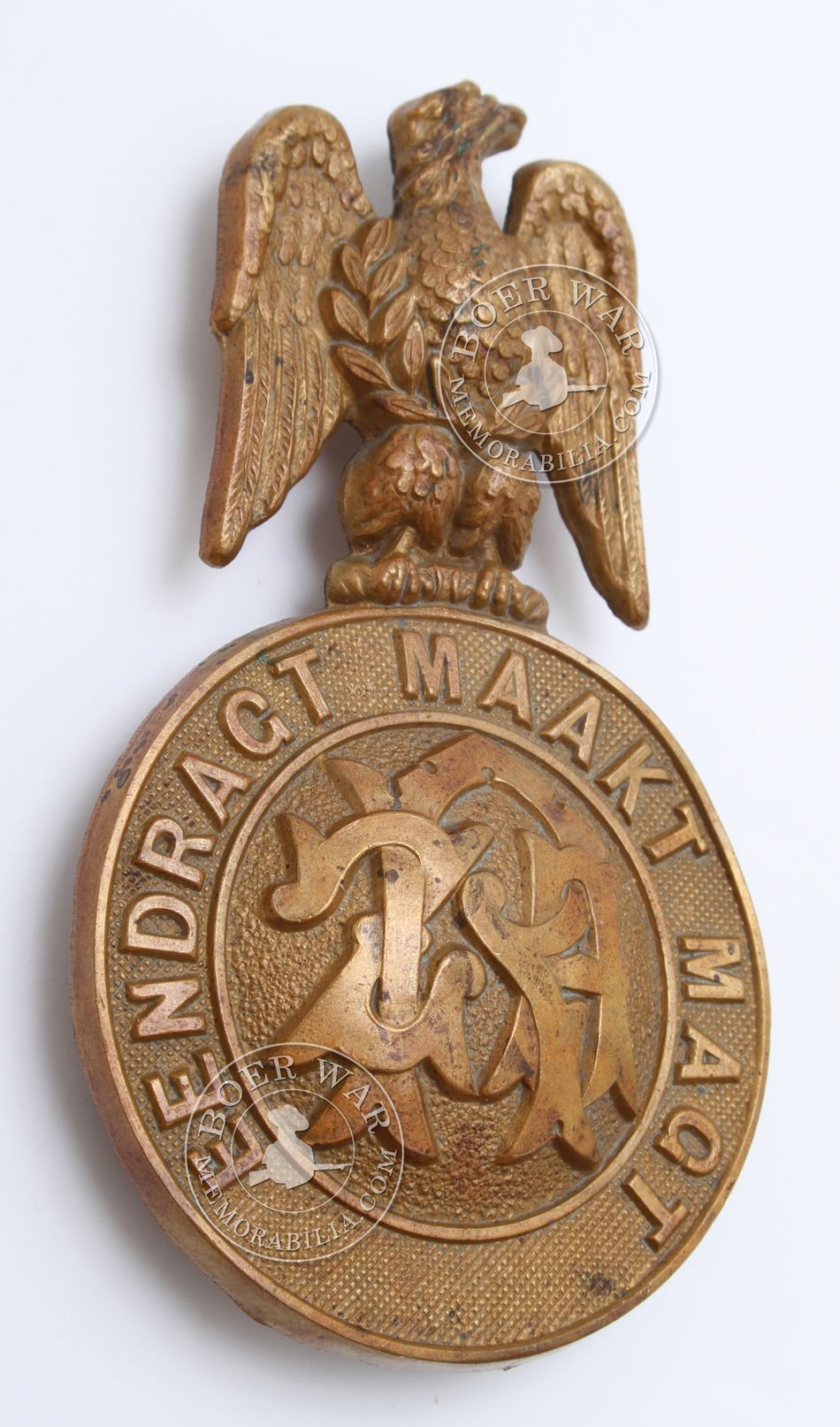|
View the embedded image gallery online at:
https://boerwarmemorabilia.com/index.php/memorabilia/military-insignia/item/116-zars-badge-6-boer-forces#sigProIdf9b95fd281 |
Item Ref# KS6139
ZAR Badge 6 - Boer Forces
Brief description: This is the head plate found on a white Pith helmet as used by the Zuid Afrikaansche Ruidende Politie (ZARP). It contains the Republics official motto: Eendragt Maakt Magt. In the centre of the badge is the letters ZAR. This design is that used by the non-commissioned officers. Material: Brass |

Boer Dress-Code for War
The average Boer wore his hard-wearing civilian working or farming clothes. This usually consisted of a jacket, waistcoat, long-sleeved shirt, trousers, a hat and boots or the well-known veldschoenen (hand-made hide shoes). Often the only difference between a Boer at the front and a Boer at home would be his military gear: rifle, bandolier(s), water bottle, haversack, binoculars etc. During the war some burghers also sported official or home-made coat-of-arms badges, ribbons and cockades in the national colours, feathers, hatbands or puggarees. Secondary clothing items included braces, ties, scarves, raincoats, socks and underwear.
Other, usually urban Boers and most of the foreign volunteers, seem to have preferred hunting outfits. These usually consisted of khaki or sand-coloured tunics or Norfolk jackets, riding breeches, boots, gaiters and sometimes even sun helmets. The tunics usually had two or four pockets which were either slit or patched. General Beyers, for example, wore a russet brown corduroy tunic with matching trousers. Artillery and police units were also issued similar ersatz uniforms as they did not have sufficient stocks for their returning reservists. The Free State Artillery issued such a large number of khaki tunics that some historians believe it was a new style of field uniform.
Early in the war at least one commando tried to achieve some form of uniformity. In the Marico Commando most members wore a light sand coloured pair of corduroy trousers, a white shirt and a dark waistcoat. Hatbands of a similar colour were also used to identify a commando, field-cornetcy or sub-units within a commando, the best known example of this probably being Kritzinger’s commando. While operating in the Cape, the three squadrons were marked by white, yellow and no puggarees respectively (wit-koppen, geel-koppen and kaal-koppen).
| Scripture |
|
Oh sing to the LORD a new song; sing to the LORD, all the earth! Sing to the LORD, bless his name; tell of his salvation from day to day. Declare his glory among the nations, his marvellous works among all the peoples! For great is the LORD, and greatly to be praised; he is to be feared above all gods. Psalm 96:4 |

